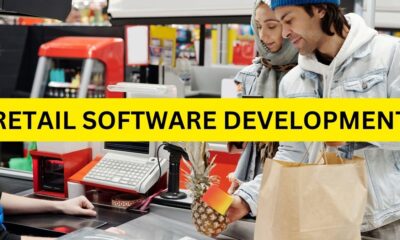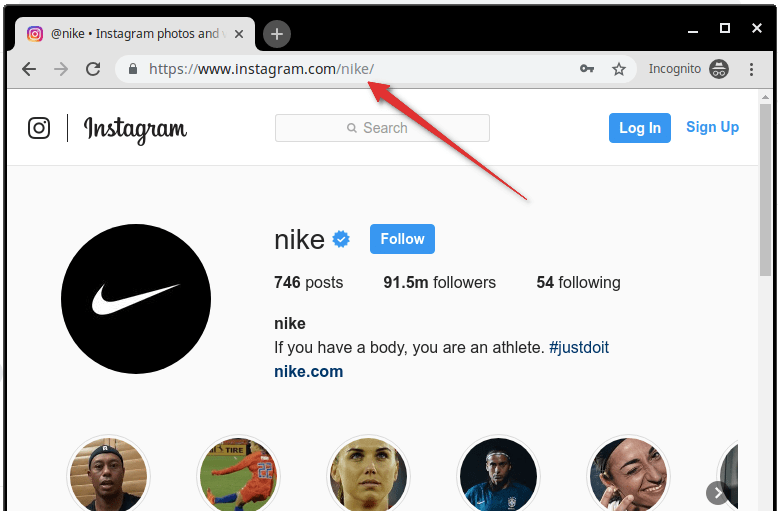News
TOP 16 Tech Trends and their Impact on Business Owners in 2023
Businesses evolve alongside the technologies aiding them throughout the length of their operation. Market trends and spending habits are volatile, and these must be monitored to ensure best practices when it comes to progressive or experimental ideas that can be injected into the company’s formula for success.
Tech trends and their impact on business owners
Thankfully, there are now digital tools within reach for small- to medium-sized business (SMB) owners that can help them grow their empires. Learn the latest technological trends that impact today’s business owners.
Artificial intelligence (AI) is a New Black
Artificial intelligence (AI) and machine learning (ML) will continue to transform business operations, enabling businesses to automate routine tasks, analyze data more effectively, and improve decision-making.
Natural language processing that uses machine learning and AI, in general, has been growing steadily over the years. Companies like Apple, Google, Microsoft, and Amazon use AI tech to enhance their clients’ experience in many different areas.
Small business owners can use AI through chatbots, allowing them to communicate with prospective clients regardless of their actual team’s availability for quick inquiries. This is especially useful if you are in a stage of business growth that requires a bit more of a hands-on approach as part of your customer service and you do not have the budget to hire additional staff or hire offshore support.
Some chatbot technologies even allow integration with various customer management systems and third-party applications used by your company.
IoT
The rise of the Internet of Things (IoT) will increase the amount of data businesses can collect, enabling them to optimize their operations and better understand customer behavior.
The Cloud
Cloud technology has been vital to achieving multiple business processes in recent years. The rise of remote employment due to the pandemic has increased the need for cloud storage services to SMBs and even global companies.
Music on-the-go featuring the entire discography of top-selling artists is made possible by the cloud—digital music giants Spotify and Apple Music both rely on this technology. Thus far, their business models have been working, as proven by the massive number of people subscribed to their services.
Automation Tools
Managing and optimizing overall work performance is made easier with the power of automation tools. When you can automate email responses by using tools like MailChimp, schedule social media posts using apps like TweetDeck, or maximize Facebook for Business’ automation and insight capabilities, you can have accurate data on what works and what doesn’t for your market.
Having reliable insights on things like click-through rates (CTR), engagement, sales, and other vital metrics will allow you to optimize your marketing strategies and give you more time to fine-tune your business growth tactics.
Blockchain
The adoption of blockchain technology will increase, improving the security and transparency of business transactions and reducing costs associated with intermediaries.
Cryptocurrency, which is touted as the future of payment methods, is enabled by blockchain technology. The blockchain network is essentially secure transaction technology that stores smart contracts, which are fortified by the fact that they are stored within what is essentially a transparent ledger. Everyone can access all transactions made using blockchain, which virtually makes it impossible to tamper.
Transactions made online using various kinds of digital assets (cryptocurrencies, private information, all data involving single transactions between parties) are secured through a distributed ledger network within the blockchain framework. Linux made tools for creating blockchain collaboration networks that may apply to your business.
Chatbots
The use of chatbots and other forms of automated customer service will increase, improving customer experiences and reducing costs associated with human customer support.
Influencer Marketing
Influencer marketing is a popular advertising campaign strategy used across many different companies all over the world today. Its power lies in its implementers’ ability to maximize all available platforms their company uses.
Finding the movers and shakers in their niche is only the first step. Influencers have different rates, level of influence, and tone of voice, even if their image fits perfectly into one niche. When choosing an influencer to work with, consider if the content they have out resonates with your brand image and identity.
Working with the right influencers will allow you to deliver your brand message in creative ways that can drum up interest for your marketing campaigns.
Big data tools
Business management tools are flooding the digital landscape these days. Many Big data tools have built-in or customizable functions that could increase your earning potential as a small business.
The key to choosing the right big data tool for managing your business is to figure out if: a.) you possess enough tech know-how to maximize the service, and b.) you can ensure that the one you choose matches your project goals.
Drone technology
Drones have gone a long way from being considered as toys for the rich to actually being used for delivery purposes. Amazon delivers packages through drones now.
In the coming years, new uses for drones may surface. Maybe they will be used more in the agricultural sector for assessing farm crops or livestock status. Irrigation systems in some parts of the world are also now benefiting from drone technology.
Fortifying cybersecurity measures
Online businesses that rely heavily on tech are susceptible to cyberattacks that can put their company and clients at risk. As technology advances, so does the level of sophistication mastered by hackers to obtain sensitive data. Brutal cyberattacks drive cybersecurity companies to beef up data safety protocols for execution.
5G and Information and Communications Technology (ICT)
The rise of 5G networks will enable faster and more reliable connectivity, enabling businesses to adopt new technologies and improve communication.
While 5G has demonstrated its importance in remote monitoring and healthcare consultation, the rollout of 5G is delayed in Europe at the time when the technology may be needed the most. The adoption of 5G will increase the cost of compatible devices and the cost of data plans. Addressing these issues to ensure inclusive access to internet will continue to be a challenge as the 5G network expands globally.

Distance Learning
As of mid-April, 191 countries announced or implemented school or university closures, impacting 1.57 billion students. Many educational institutions started offering courses online to ensure education was not disrupted by quarantine measures. Technologies involved in distant learning are similar to those for remote work and also include virtual reality, augmented reality, 3D printing and artificial-intelligence-enabled robot teachers.

Concerns about distance learning include the possibility the technologies could create a wider divide in terms of digital readiness and income level. Distance learning could also create economic pressure on parents – more often women – who need to stay home to watch their children and may face decreased productivity at work.
Telehealth
Telehealth can be an effective way to contain the spread of COVID-19 while still providing essential primary care. Wearable personal IoT devices can track vital signs. Chatbots can make initial diagnoses based on symptoms identified by patients.

However, in countries where medical costs are high, it’s important to ensure telehealth will be covered by insurance. Telehealth also requires a certain level of tech literacy to operate, as well as a good internet connection. And as medical services are one of the most heavily regulated businesses, doctors typically can only provide medical care to patients who live in the same jurisdiction. Regulations, at the time they were written, may not have envisioned a world where telehealth would be available.
Online Entertainment
Although quarantine measures have reduced in-person interactions significantly, human creativity has brought the party online. Cloud raves and online streaming of concerts have gain traction around the world. Chinese film production companies also released films online. Museums and international heritage sites offer virtual tours. There has also been a surge of online gaming traffic since the outbreak.

Supply Chain 4.0
The COVID-19 pandemic has created disruptions to the global supply chain. With distancing and quarantine orders, some factories are completely shut down. While demand for food and personal protective equipment soar, some countries have implemented different levels of export bans on those items. Heavy reliance on paper-based records, a lack of visibility on data and lack of diversity and flexibility have made existing supply chain system vulnerable to any pandemic.
Core technologies of the Fourth Industrial Revolution, such as Big Data, cloud computing, Internet-of-Things (“IoT”) and blockchain are building a more resilient supply chain management system for the future by enhancing the accuracy of data and encouraging data sharing.
3D Printing
3D printing technology has been deployed to mitigate shocks to the supply chain and export bans on personal protective equipment. 3D printing offers flexibility in production: the same printer can produce different products based on different design files and materials, and simple parts can be made onsite quickly without requiring a lengthy procurement process and a long wait for the shipment to arrive.

However, massive production using 3D printing faces a few obstacles. First, there may be intellectual property issues involved in producing parts that are protected by patent. Second, production of certain goods, such as surgical masks, is subject to regulatory approvals, which can take a long time to obtain. Other unsolved issues include how design files should be protected under patent regimes, the place of origin and impact on trade volumes and product liability associated with 3D printed products.
Grow your business with the right technological tools
More growth opportunities open up when businesses embrace technological advancements. Doing things the traditional way teaches you discipline, but integrating technological innovations into your strategy increases your chances for survival.
Whether you use a brand new or a refurbished laptop as your primary tool to manage your business remotely, there is a wealth of digital apps and useful technologies that can help your company grow. The key is to find the tools and tech that work well with your business model.
-

 Manage Your Business20 hours ago
Manage Your Business20 hours agoTOP 10 VoIP providers for Small Business in 2024
-

 Cyber Risk Management5 days ago
Cyber Risk Management5 days agoHow Much Does a Hosting Server Cost Per User for an App?
-

 Outsourcing Development5 days ago
Outsourcing Development5 days agoAll you need to know about Offshore Staff Augmentation
-

 Software Development5 days ago
Software Development5 days agoThings to consider before starting a Retail Software Development
-
Edtech20 hours ago
How to fix PII_EMAIL_788859F71F6238F53EA2 Error
-

 Grow Your Business5 days ago
Grow Your Business5 days agoThe Average Size of Home Office: A Perfect Workspace
-
Solution Review5 days ago
Top 10 Best Fake ID Websites [OnlyFake?]
-
Business Imprint5 days ago
How Gaming Technologies are Transforming the Entertainment Industry






